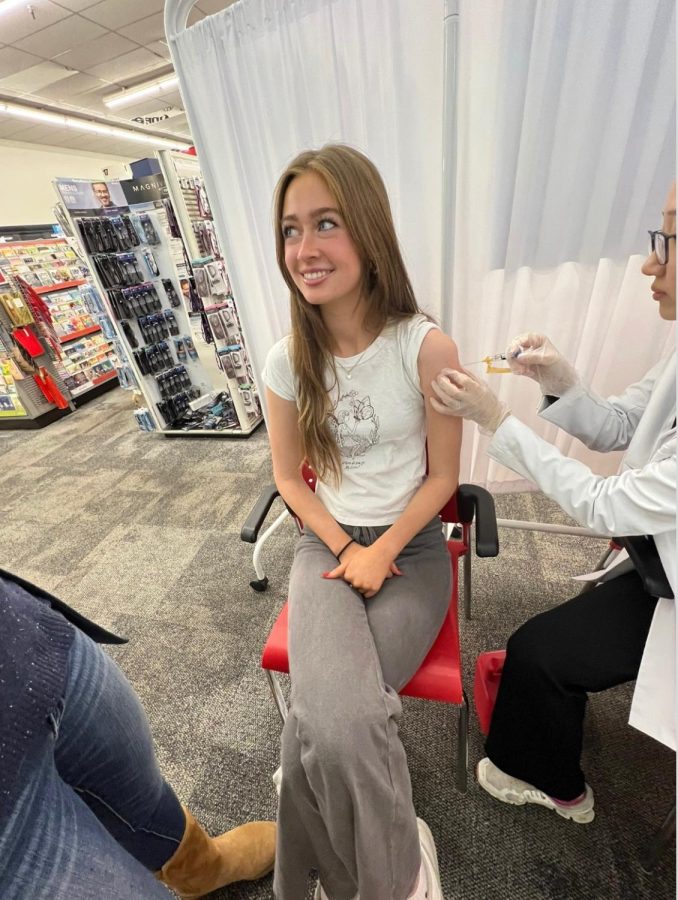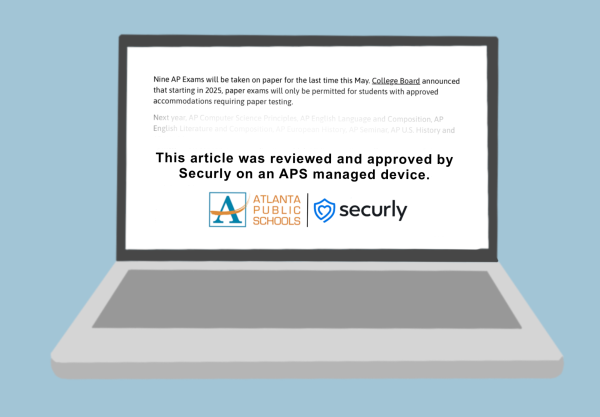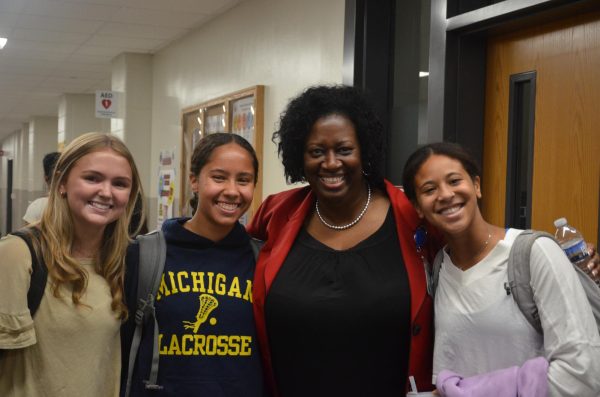Flu cases hit record highs in the US
Junior Claire Diem receives her free flu vaccine from her local CVS
November 30, 2022
Schools across the country are experiencing the effects of this year’s flu season, which may reach record-breaking highs.
The CDC estimates that there have been at least 8.7 million illnesses, 78,000 hospitalizations, and 4,500 deaths from flu so far this season in the United States, the highest rates since the 2009 H1N1 swine flu pandemic.
“These [seasons] come in cycles; they come in waves,” Asha Kumar-Veeraswamy, pediatric emergency medical physician of the Medical University of South Carolina, said. “I think it was actually predicted that we were going to have a flu season like this, and it has happened every few years; so this is not surprising to me. Pretty much anybody who has a fever right now, has the flu.”
Junior Lisa McClain said she experienced severe symptoms while she was sick with the flu.
“I had a really sore throat and it hurt to cough,” McClain said. “It honestly just sucked not feeling good and being stuck inside.”
Students are becoming increasingly concerned as flu cases continue to rise in school.
“A lot of my friends have been out sick,” junior Mischa Pollock said. “I also have heard that it is a lot worse this year. I am going to try to do everything I can to prevent myself from getting sick.”
The past few years flu cases have been relatively low due to COVID and quarantine.
“The past two years with COVID, the flu season was almost nonexistent,” school nurse Wanda Taylor said. “We had to wear masks, there was no flu, no RSV, no common cold. You didn’t hear about it.”
Taylor has been the school nurse at Midtown since 2017, and she says she is more concerned about this flu season than in the past.
“Simply because you don’t know what it is,” Taylor said. “Is it the flu, is it COVID, is it RSV? You just don’t know.”
Flu season began at the beginning of October, but vaccines have been available since early August. Based on the CDC’s Weekly Cumulative Doses Chart, vaccination rates are lower than previous years. As of the end of November, around 154 million doses of the flu vaccine had been administered throughout the United States.
“I can’t say that I’ve seen people being better about getting the flu vaccine than in previous years,” Kumar-Veeraswamy said. “The vaccine is really the key to prevention.”
The CDC expects the U.S. to have as many as 173 million to 183 million doses of the flu vaccine available during this season.
“The vaccine is free for most, and it’s available almost everywhere,” Kumar-Veeraswamy said. “I don’t know why vaccination rates aren’t higher.”
The CDC recommends that anyone over six months old should be vaccinated by the end of October to protect themselves and others from the flu.
“The primary way to prevent getting sick from the flu is to get the vaccine and to practice good hand washing and just good hygiene in general,” Kumar-Veeraswamy said. “As an emergency healthcare worker, it is definitely more helpful to us the more people that get vaccinated.”
Since the beginning of the flu season cases have rapidly increased and are expected to continue to increase.
“It’s scary,” McClain said. “I haven’t seen so many people get sick so quickly like I have this year. Experiencing the flu myself was just not a pleasant experience.”













